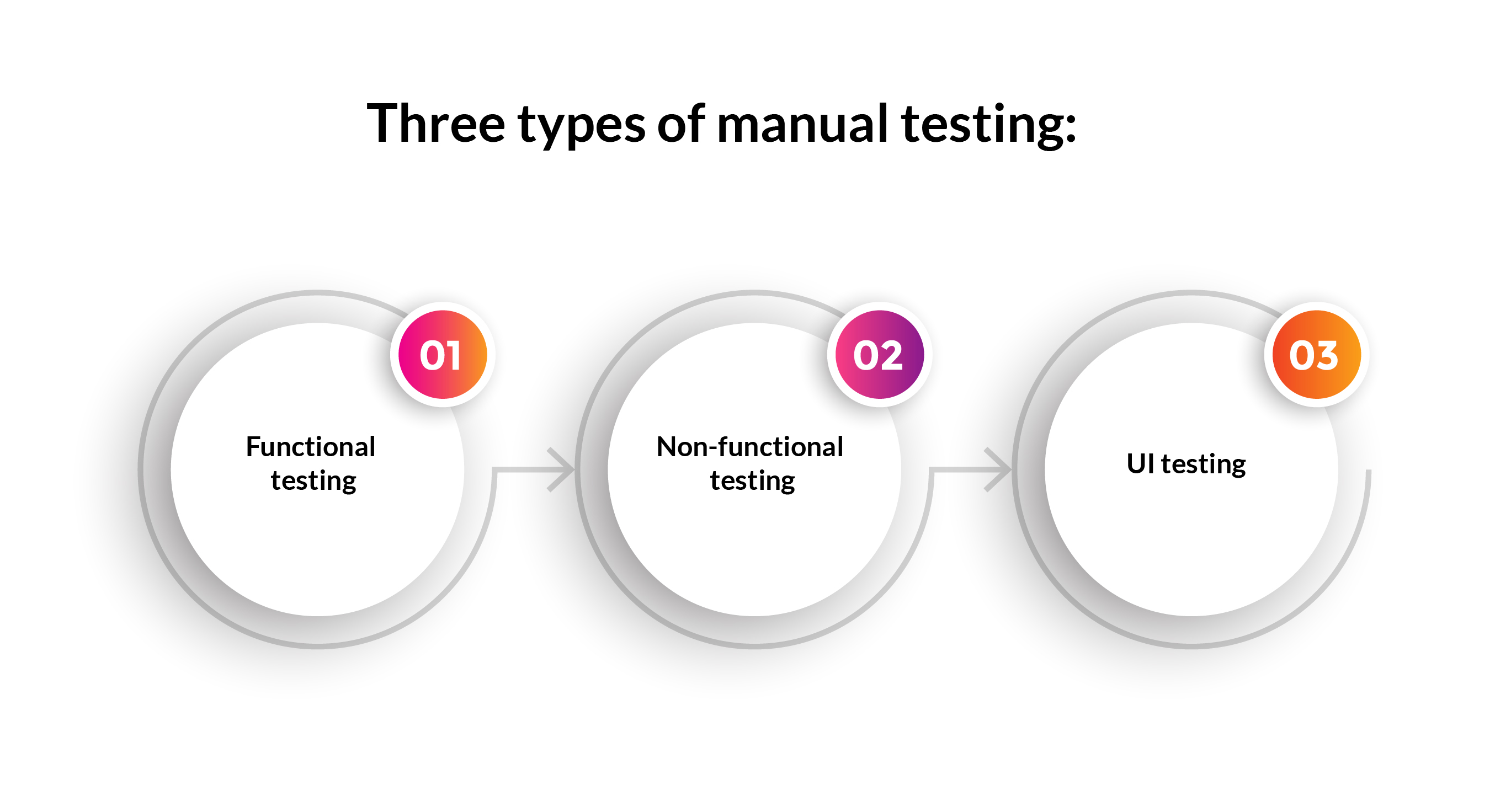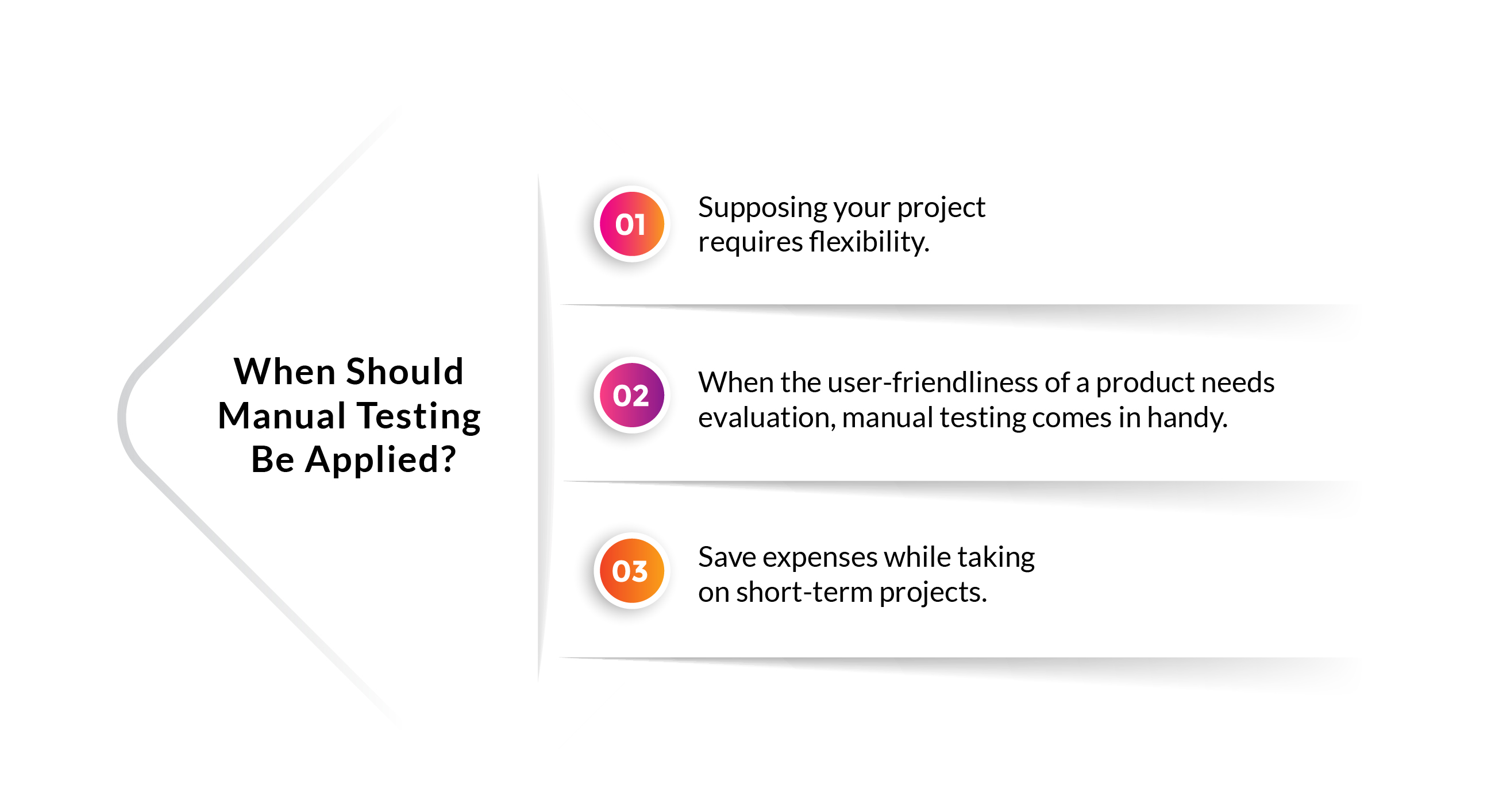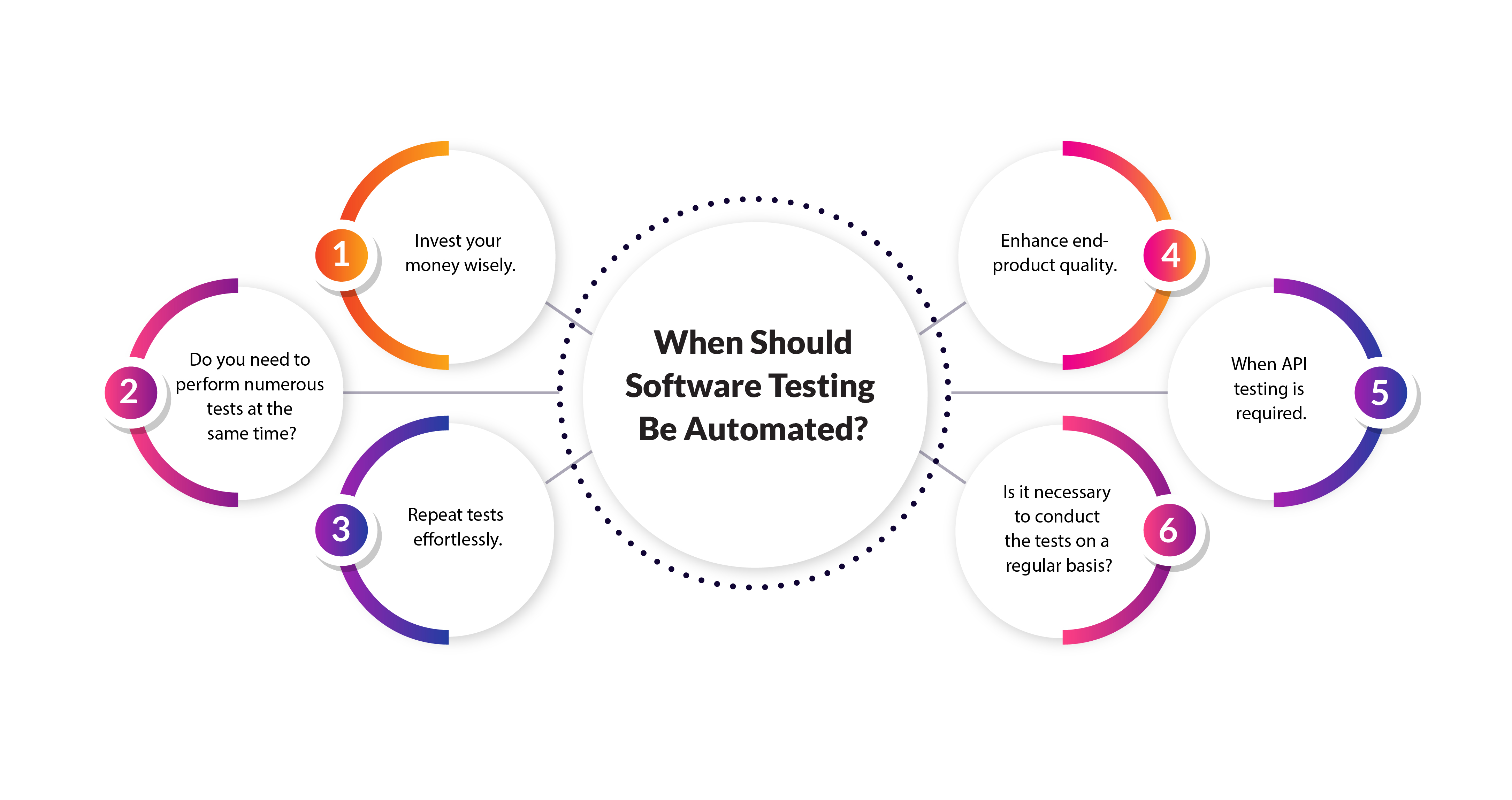What is the significance of software testing? Without comprehensive testing, there is no way to get outstanding software. End-user frustration, overburdened tech support lines, and poorly accessed apps can all be avoided with well-tested scripts.
Hiring manual testers and automated testing experts for your company enhances the reliability of the code while also lowering expenses. With experienced engineers at your disposal, developers can focus on their main task: delivering code.
Overall, testing is the key component that turns your project from a possibly irritating app to a dependable solution with a pleasant UX (user experience).
Quintagroup can gather a team of experts who know testing methods from a to z. Ensure a thriving end-product with our services. Contact us to discover more, make a request, or ask a question.
What Is the Definition of Manual Testing Processes?
Manual testing is a testing process in which tests are run manually by a QA Analyst. It's used to identify errors in the code that is still in progress.
In this testing method, the tester examines all the software's essential aspects. Using only a few software testing tools as Apache JMeter, Testcomplete, Postman, software testers perform test scenarios and produce testing data in this process.
It is a traditional method for all forms of testing that aids in the discovery of faults in software products. An expert tester usually performs the step-by-step software testing procedure. While testing manually, the tester is obligated to communicate any issues to the programmers, responsible for troubleshooting. Devoted professionals should produce major updates quickly, the testing frequently occurs during the development process, which ensures a high-quality end-product.
Functional, non-functional, and UI testing are the three types of manual testing.

- Testing the capabilities of software is known as functional testing. It examines the characteristics of the software in question. A requirement specification is used as a reference to test the application based on the client's needs.
- Time, precision, consistency, accuracy, and longevity of a system under various unfavorable conditions are all part of non-functional testing.
- UI Testing examines the software's graphical user interface. The goal of User Interface Testing is to make sure that an app performs as expected by inspecting displays and controls such as panels, sliders, buttons, and logos.
What is Automated Testing, and How Does It Work?
When it comes to automated software testing, testers usually use software tools such as Cypress or Selenium to perform system testing by running pre-written scripts. Testers generate test scripts and verify software using relevant digital solutions. The main purpose is to finish testing in less time.
Automated testing is based completely on a pre-written test that operates autonomously and compares the actual findings to the anticipated result. This assists the tester in determining if an application runs as planned.
You can use test automation to complete mundane work and regression tests even without an additional IT worker. Even if all operations are automated, the creation of the first testing scripts necessitates some human work.
Important Distinction between Manual and Automated Testing
- A QA analyst performs manual testing, while a machine performs test automation with the help of scripts written by a human.
- Black-box testing is possible with both manual testing and automation testing.
- Manual testing may be inaccurate due to the chance of human error, while automation, with its code and script-based nature, is dependable.
- Manual regression testing requires awhile, however, automated regression testing is quite quick.
- Without programming experience, manual testing is conceivable. However, you can't perform automated testing without knowing a programming language: JavaScript, Python, Ruby, C, PHP or any suitable one.
When Should Manual Testing Be Applied?
1. Supposing your project requires flexibility.
Manual testing is less accurate than automation, but it gives testers more freedom in their procedures. However, if testers come up with some new decision they would like to start working on immediately, automating it entails creating test cases, coding them with a test automation program, and then executing the test, which might take some time.
2. When the user-friendliness of a product needs evaluation, manual testing comes in handy.
The utility of a program determines whether it succeeds or fails. This, however, goes much beyond simply performing automated tests to confirm the absence of any issues related to UI. Systems do not think for themselves; they do pre-programmed tasks and are unable to provide feedback while a human user might provide when utilizing an app. Automated tests, for example, can easily uncover code flaws, but they can't predict users' interactions with a product or how successfully they'll be able to use the application.
3. Save expenses while taking on short-term projects.
In the scenario of working on small projects, automation might necessitate a significant amount of expenses and preparation, both of which are time-consuming in short-term initiatives. The cost of a project automation may be too much in comparison to the payoff and value provided by the final result. Manual testing would be less expensive and more advantageous in this case.

When Should Software Testing Be Automated?
1. Invest your money wisely.
If the invested money makes sense, then it is better to automize the tests. Minimize costs where you can while still delivering a high-quality product. This is where automation truly shines. However, automation technologies are not cheap. Therefore, the project must be large enough to warrant the investment. Furthermore, for the cost to be justified, the test must have the appropriate longevity.
2. Do you need to perform numerous tests at the same time?
It's not easy to run the same manual tests at the same time. The chances of a team being able to run multiple tests at the same time are slim to none. This process is made much easier by automation, which allows teams to test quickly without getting rushed.
3. Repeat tests effortlessly.
Test automation is useful when you have a lot of repeated tests. If you're performing the same test over and over without altering it, it's likely that automating it would save you a lot of time. That's because having a manual task done on a frequent basis consumes your team's time and attention. Therefore, such a routine might result in additional mistakes due to disinterest.

4. Enhance an end-product quality.
The quality will be undoubtedly enhanced. The human factor is no longer a thing thanks to automation. As a result, in some circumstances, the use of automated testing can significantly improve quality. However, you may perform several tests simultaneously, ensuring that you produce a well-proven result that can be thoroughly checked multiple times.
5. When API testing is required.
API testing examines application programming interfaces directly, including their functionality, dependability, efficiency, and cybersecurity. Most API services contain characteristics, which allow you to develop high-coverage automated tests rather than perform manual testing.
6. Is it necessary to conduct the tests on a regular basis?
Many technical teams simply do not have the resources to execute regular tests at a high rate. Manual testing can only go so far, especially for smaller companies that don't have their own testing department. If you'd like to expand your testing capacity, contact one of our experts now to learn more about our services. Quintagroup is always willing to hire IT professionals for you such as QAs, UI/UX designers, programmers, and so on.
Which is More Effective Manual or Automated Testing?
When it comes to deciding whether manual or automated testing is superior, there is no single right answer. Each of these strategies has benefits and drawbacks, and they should only be utilized in limited situations.
Although both methods can yield outstanding results, in most circumstances, a mix of the two is the most effective. When dealing with a complicated system, for example, an automated test suite is insufficient. However, if you're evaluating a tiny product, you should still use manual system testing.
Summary
The actual difference between automated and manual testing is the testing environment.
The tests are carried out by workers through manual testing. Typically, this procedure is performed without the use of any programs or scripts. It takes a long time and does not necessitate any prior understanding of computer languages.
The tests are run using programs and coding in automated testing. The objective of this strategy is to accomplish the test in less time. Even in this instance, though, manual labor is utilized to write the required testing scripts.
In the field of testing, manual testing is still as important as automation. There are several types of testing for which an automation tool is inefficient and manual testing is required. Moreover, even test automation tools such as Cypress or Selenium do not require human help, but they do demand instruction from a human.
Manual and automation testing both have advantages and disadvantages, and which one to use depends on the project's requirements, timeline, and most crucially, funding. Finally, we may argue that manual testing is appropriate when competent testers are required, while automation is appropriate when the testing process must be automated.
